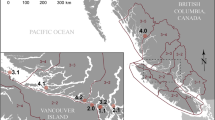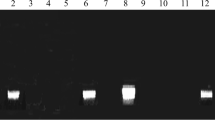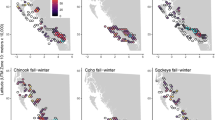Abstract
EPIDEMICS of “Furunculosis of the Salmonicidæ” generally attributed to a well-defined bacterium— B. salmonicida (Emmerich and Weibel, 1894)—have been the cause of a high mortality among salmon and trout in England during recent years and have been difficult to deal with owing to a lack of know ledge of the epidemiology of the disease and particularly of the reservoirs of the infection during inter-epidemic seasons. The problem of following out the infection is not easy as B. salmonicida has no saprophytic existence in river water, in which it does not live for more than a few days, so that it is useless to attempt the isolation of the bacillus from the suspected water—even if this were a practical possibility. Moreover, the absence of sick or dead fish does not exclude the possibility of infection, as apparently healthy fish are known to act as carriers of the disease and to be capable of spreading the infection.
This is a preview of subscription content, access via your institution
Access options
Subscribe to this journal
Receive 51 print issues and online access
$199.00 per year
only $3.90 per issue
Buy this article
- Purchase on SpringerLink
- Instant access to full article PDF
Prices may be subject to local taxes which are calculated during checkout
Similar content being viewed by others
Author information
Authors and Affiliations
Rights and permissions
About this article
Cite this article
TODD, C. The Presence of a Bacteriophage for B, salmonicida in River Waters. Nature 131, 360 (1933). https://doi.org/10.1038/131360a0
Issue date:
DOI: https://doi.org/10.1038/131360a0
This article is cited by
-
Characterization and diversity of phages infecting Aeromonas salmonicida subsp. salmonicida
Scientific Reports (2017)



